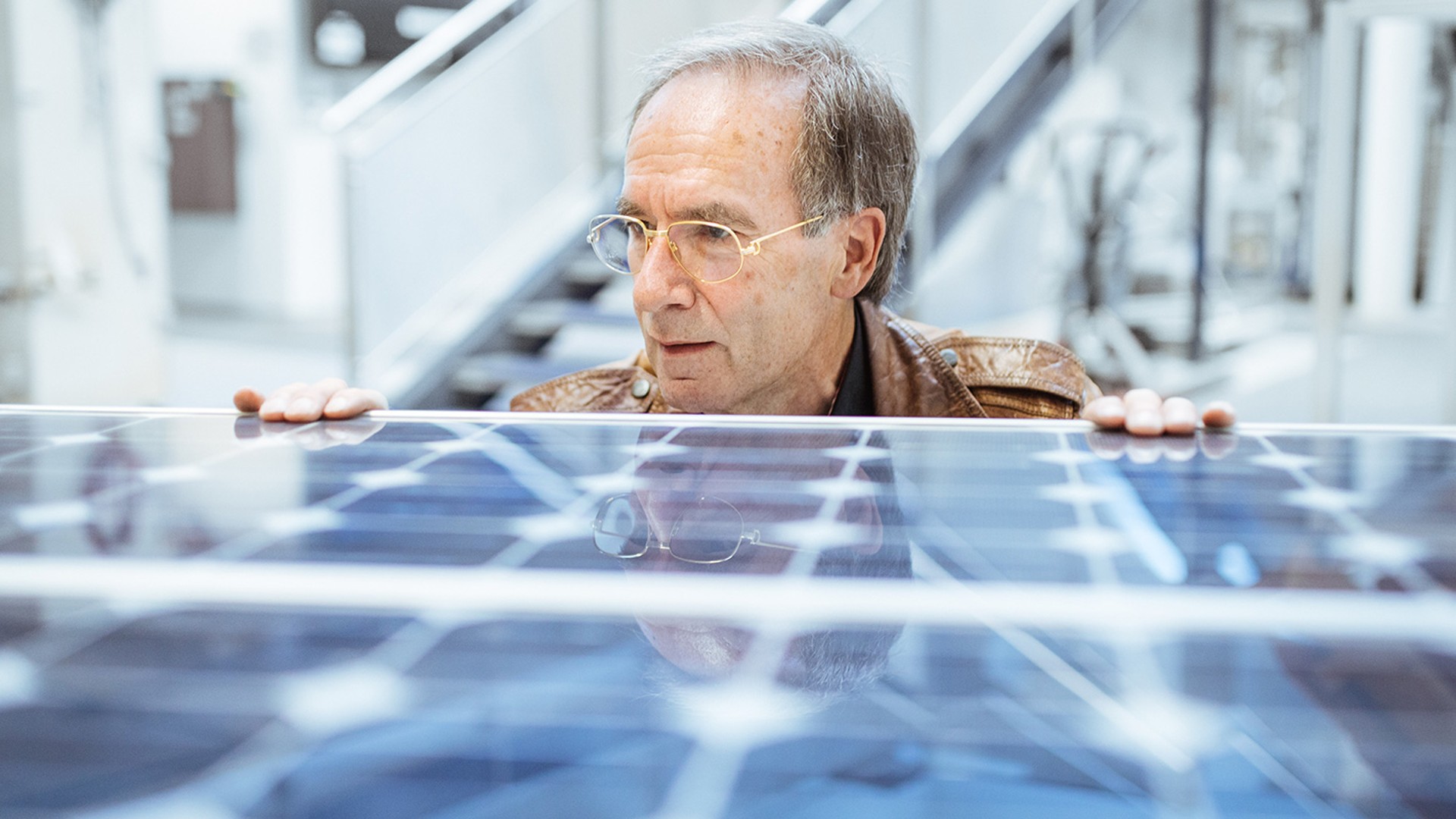
8 minutes reading time
The cold that came from the sun
Many objects have a history. But that of an inconspicuous Liebherr refrigerator from 1994, which stood forgotten for decades in a warehouse, is a very special one: It tells of historians and developers, the sun, Africa and the birth of Liebherr’s modern energy-saving household appliances.
An unexpected discovery
Sometimes coincidence is the best detective. And it was just such a coincidence that led Hansjörg Steinhorst of the Liebherr Archive on the trail of an almost forgotten invention. It all began in autumn 2019 with a tour of the plant in Biberach an der Riss, where he met the engineer and local historian Johannes Angele. While the two history-enthusiasts walked through the production facilities, they had a lively conversation about historical collectors’ items. “I have something at home, too,” Johannes Angele suddenly said. “A Liebherr solar fridge. It’s been in my company's warehouse for years.” Hansjörg Steinhorst could hardly believe what he heard. Although he had heard of this refrigerator, it had been missing for almost three decades. Could this be it?
A few days later, Johannes Angele sent two photos of his treasure to the archive man: a KT 1580 Solar, which was originally packed in a yellowed cardboard box on a wooden pallet. “When I saw the pictures, I was absolutely thrilled,” says Hansjörg Steinhorst. “I wanted to find out more and immediately started researching.” He had so many questions that needed answering: Why had the photovoltaic refrigerator been built? Who had invented it? And why had it turned up in the possession of a local historian in Ochsenhausen 25 years later?
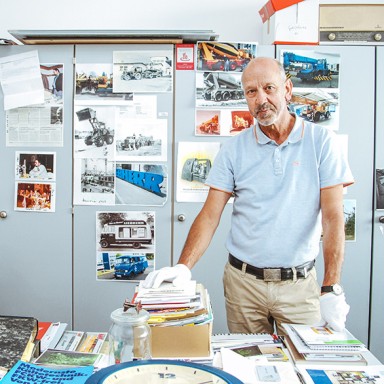
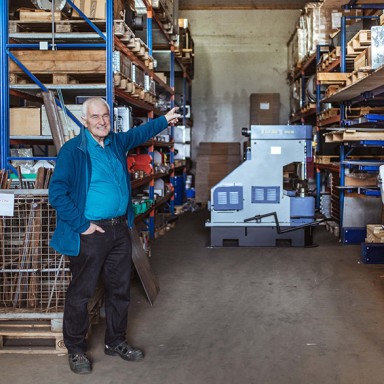
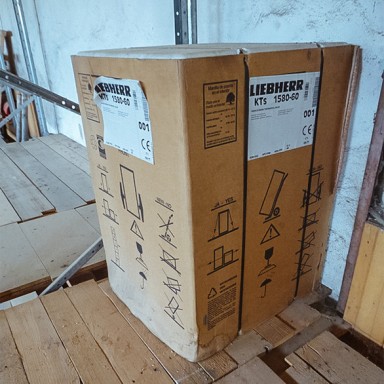
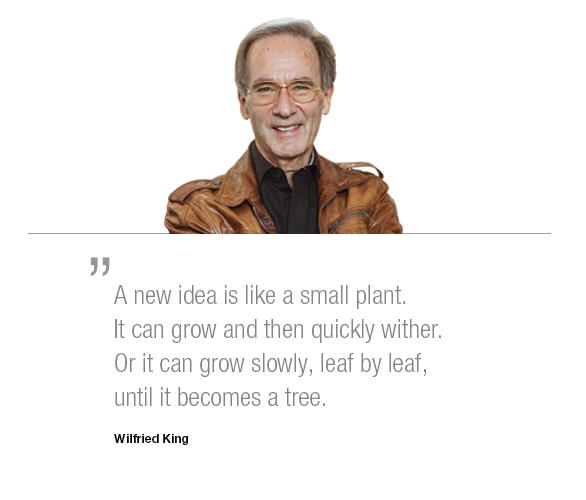
Innovation in the times of the ozone hole
The early 1990s were a time of upheaval for Wilfried King, Herbert Gerner and Matthias Wiest, the development team at the Liebherr-Hausgeräte GmbH in Ochsenhausen (Germany). In 1989, the United Nations had agreed on a ban on chlorofluorocarbons (CFCs) with the Montreal Protocol, which was to come into force in 1995. “The entire cooling industry worked flat out to develop fridges and freezers without CFC refrigerants,” recalls Matthias Wiest, who is now head of the Cooling Division. Like everyone else in the industry, the Liebherr developers were working on the future of cooling in their research laboratory between wooden walls, cables and measuring rooms. Wilfried King, Head of Basic Technological Development at the time, remembers it well: “Those were exciting, but also difficult times. CFCs were on everyone’s lips because of their contribution to the greenhouse effect and the continuous enlargement of the ozone hole. You could really feel that you were in the middle of a generational change.”
It happened everywhere: the media reported almost daily on the environmental damage caused by greenhouse gases such as CFCs and FCs (fluorocarbons). Greenpeace drew attention to environmental protection with sensational campaigns. And people took to the streets for the climate. Climate change had become a reality. Finally, in 1993, the three developers' dream became true. For the first time, Liebherr added a CFC- and FC-free refrigerator with the insulation of a freezer to its portfolio: their KT 1580 model. For Liebherr, it was the turning point towards consistent energy-saving thinking.
CFCs, FCs and the greenhouse effect
The greenhouse gases CFC (chlorofluorocarbon) and FC (fluorocarbon) were used as foam blowing agents and refrigerants in refrigerators and freezers. They were known to promote global warming. CFCs in particular played a central role in the destruction of the ozone layer and the formation of the so-called ozone hole. Starting with the KT 1580, Liebherr switched to CFC- and FC-free refrigerators from 1993.
Solar power for the energy revolution
“For its time, the KT 1580 was a pioneer in terms of energy-saving and, in 1994, was awarded the rating ‘very good’ by the leading German consumer safety group Stiftung Warentest,” recalls Herbert Gerner, now Head of Appliance Electronics. But the development team wanted more, because the electricity used for the refrigerator still came from the socket, thus promoting the indirect greenhouse effect. After careful consideration, the developers came up with the solution: solar energy. “I had already studied photovoltaics during my studies. In the meantime, the technology had made great strides and you didn’t need many solar panels to power a fridge anymore. Meaning, in terms of efficiency, costs, availability and performance, things became really interesting,” explains Herbert Gerner. Thus, the developers began to upgrade their CFC- and FC-free refrigerator with solar power. “The KT 1580 was predestined for the conversion to solar. It was our technology project. With it, we wanted to position Liebherr as an innovation driver,” says Wilfried King. And it worked. They had thought of everything. You could even buy the refrigerator as a modular system, individually or with a solar panel and battery. With it, the appliance could cool for a week without sunlight. “And we looked even further ahead,” recalls Wilfried King. “Our idea was to bring our solar fridge to small villages in Africa that weren’t connected to the power grid, for example, to cool medications in rural hospitals.” Their dream would come true in unexpected ways.
When ideas become "trees"
1995 finally became the year of the KT 1580 Solar. In April, Liebherr dedicated an entire booth at the first Climate Protection Trade Fair in Berlin to the model, which had been awarded the then brand new European energy label “A” – “top saver”. In August, the fridge was even mentioned in one of Germany’s most renowned newspapers, the Frankfurter Allgemeine Zeitung: “With 144 litres, this washing-machine-sized cabinet has more volume than previous 12-volt appliances. It is suitable for use in the tropics and can be operated independently of the mains supply,” the newspaper headlined. Despite all the attention, only around 50 units were produced. “We were very proud of our invention. But as it is with new technologies, sometimes you’re simply ahead of your time,” says Matthias Wiest looking back. Wilfried King agrees: “Nothing is big right away. You never have certainty that a development will last. A new idea is like a small plant. It can grow and then quickly wither. Or it can grow slowly, leaf by leaf, until it becomes a tree."
In the end, the idea behind the KT 1580 did turn into a tree – even without photovoltaics. It is still considered the prototype of Liebherr’s energy-saving household appliances today.
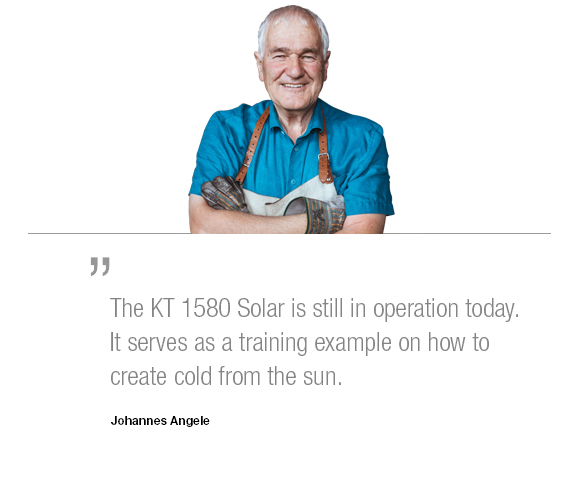
Africa after all
Only one question remains: How did solar refrigerator reappear almost three decades later in the warehouse of local historian Johannes Angele? The answer is as simple as it is exciting. In 1998, after the KT 1580 Solar had almost disappeared from the product portfolio, Johannes Angele contacted Liebherr in Ochsenhausen on behalf of the friends’ association ‘Förderverein Piela Bilanga e.V.’ which supports charitable projects in Burkina Faso (Africa). The association had already equipped the school of the village Piela with photovoltaic panels in 1991 and wanted to support the inhabitants with further solar technology. Now, they were looking for refrigerators that could be powered by solar energy. They were lucky and some models of the solar fridge were still available. The association purchased two. One of them would go on a long journey.
“At that time, our association supported Souleymane Sow, a young local who, with his technical knowledge, had made a big impression on us and the German sisters of the protestant mission, while he helped build the solar modules for Piela. We decided to collect money for him to enable him to train as a technician in Germany,” says Johannes Angele. "After my successful graduation I went back to Burkina Faso and founded a company for solar and computer technology," says Souleymane Sow. “One year later," adds Johannes Angele, proud of his friend's achievement, "we sent him one of the two solar fridges. By the way, it is still in operation today. It serves as a training example on how to create cold from the sun."
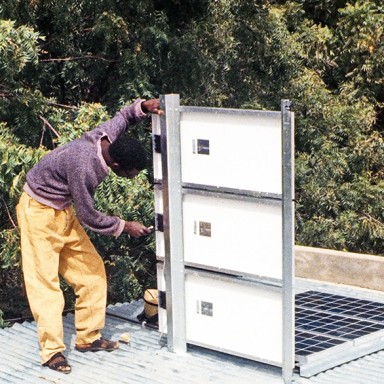
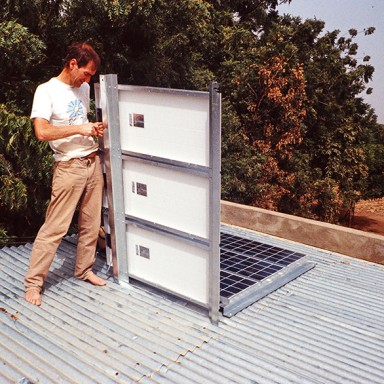
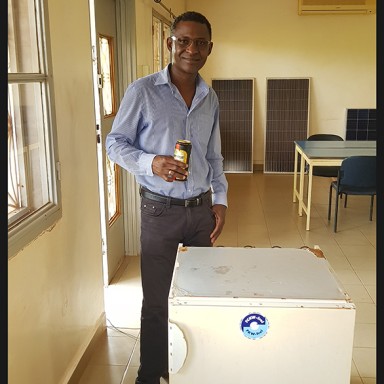
Back to where it all began
The last remaining refrigerator from Johannes Angele’s warehouse fell into oblivion. Hansjörg Steinhorst from the Liebherr Archive ultimately took care of it personally. In return for a donation to the Piela Bilanga Förderverein, he brought the piece of Liebherr history back to Ochsenhausen. There, in the very development laboratory in which it was once created and under the watchful eyes of its inventors Wilfried King and Herbert Gerner, it was reconnected to its solar panel after 22 years.
Today, as part of the collection of historic appliances, the KT 1580 Solar is a reminder of the times when the Liebherr household appliances became energy-saving professionals.



